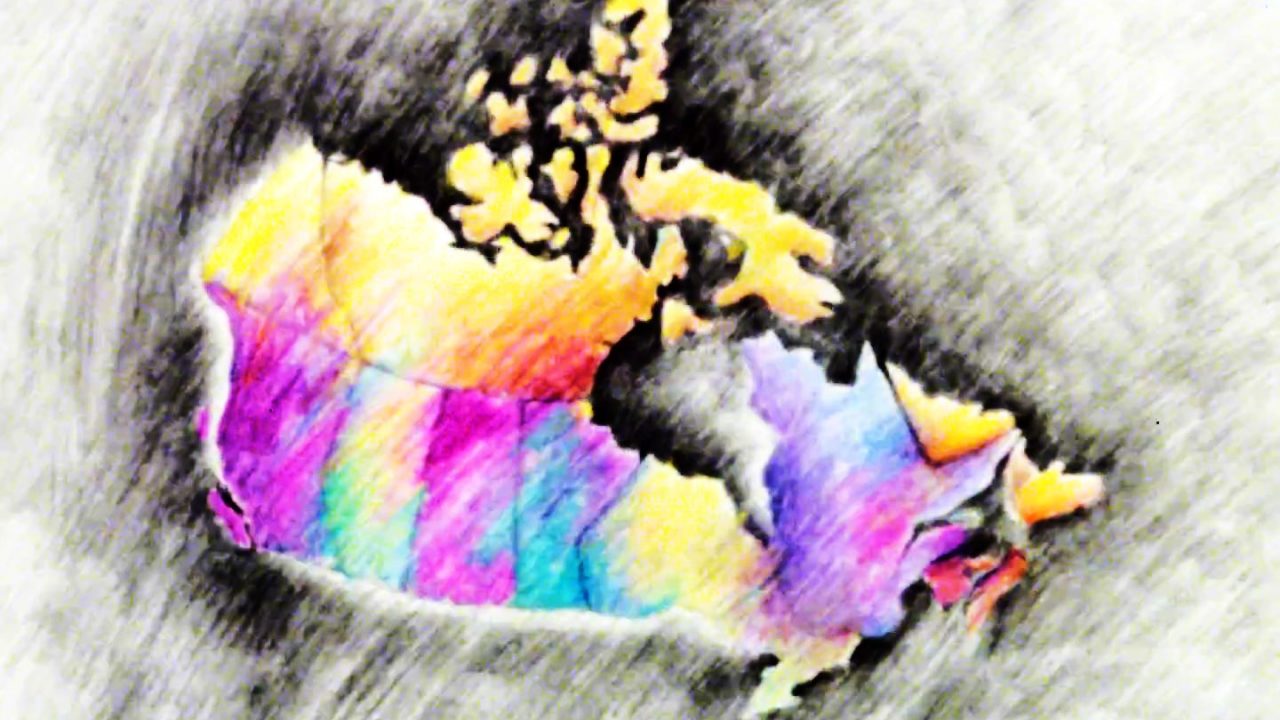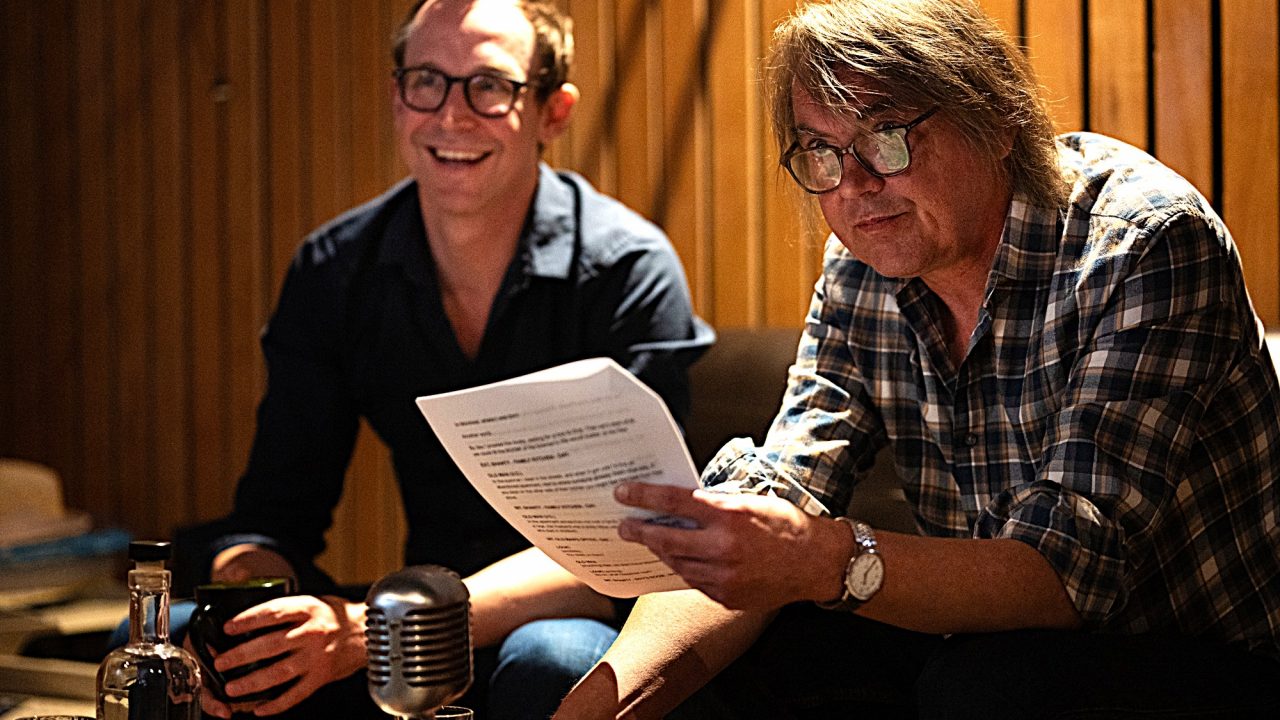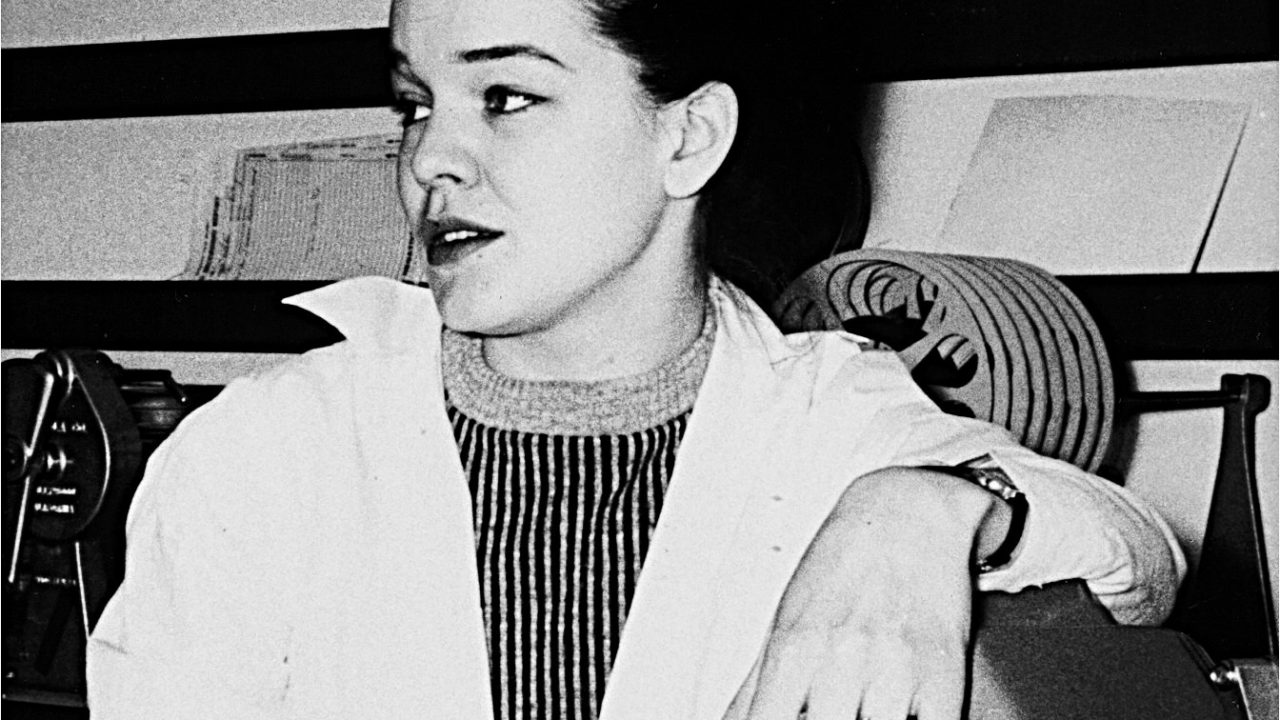
Canada as Seen by NFB Filmmakers: Films from Across the Country (Part 1)
Canada as Seen by NFB Filmmakers: Films from Across the Country (Part 1)
To mark Canada Day this year, the NFB is showcasing dozens of outstanding films made by directors in provinces and territories across the country, providing a rich, historical look at Canadian society’s diverse realities and communities through 14 channels, each of which contains at least nine titles—one per decade from 1940 to 2020. This Curator’s Perspective offers an introduction to this Canada Day programming by highlighting some of the films created for this initiative, which takes viewers on a journey through multi-ethnic and multi-cultural Canada that spans more than 80 years.
Since its inception, the NFB has played a crucial role in modernizing Canadian cinema, not only by producing films made by Canadians for a Canadian public, but also by prioritizing a policy of inclusion that has enabled Indigenous Peoples, immigrants, francophones, anglophones, women, youth, Black people, Latin Americans, Asian Canadians, Arab Canadians and members of 2SLGBTQI+ communities to participate in Canada’s film landscape. With this focused sample of 85 years of producing, the NFB is pleased to offer viewers a sweeping, one-of-a-kind Canadian v“family film album.” This is an invitation to watch and enjoy some of the NFB’s filmmaking gems over the decades—memorable snapshots of life from each Canadian province and territory!
Given the size of the program, this blog post will be published in two parts. If you’d like to read part one, click on the following link: “Canada as Seen by NFB Filmmakers (Part 2): Nova Scotia, the Northwest Territories, Newfoundland and Labrador, New Brunswick, Manitoba, British Columbia and Alberta.”
Yukon: Whitehorse, Dawson City and More
We begin with the channel Yukon as Seen by NFB Filmmakers, which brings this Canadian territory to life with its roundup of films made across eight decades. The channel features nine titles directed by Indigenous, women or immigrant filmmakers, among others. Ranging from productions made in 1955 through to 2022, the films cover an array of topics, including the gold rush of the 1890s, a tribute to Indigenous women and the story of a one-man movie industry operating in the Yukon and Dawson City in the 1970s. This channel also includes Fritz Mueller’s recent feature doc Voices Across the Water (2022), which follows two master boat builders as they practise their art and find a way back to balance and healing.
Voices Across the Water, Fritz Mueller, provided by the National Film Board of Canada
Saskatchewan: 100+ Years of Cinema
Next, Saskatchewan as Seen by NFB Filmmakers offers an eclectic program of 10 films that dive deep into the lives and experiences of the province’s people and communities—including one of the earliest titles in the NFB collection, A Bird City (1919), a five-minute film about a bird sanctuary near Moose Jaw. The channel features a film directed by Saskatchewan innovator Evelyn Spice Cherry, Windbreaks on the Prairies (1943), as well as two NFB classics, Don Haldane’s Drylanders (1963) and Larry Bauman’s The Move (1985). Another highlight of this channel is The Great Electrical Revolution (1990) by Larry Bauman, a rare and charming short-fiction film released in Regina in 1990. In addition, you’ll find the recent release A Passage Beyond Fortune (2022), by Chinese-Canadian painter, photographer and filmmaker Weiye Su, who explores an intimate episode in the life of the Chow family in Moose Jaw, home to an anti-Chinese immigration policy that fractured their family’s settlement in the city.
A Passage Beyond Fortune, Weiye Su, provided by the National Film Board of Canada
Prince Edward Island: Environment, Industry and Romance
Prince Edward Island as Seen by NFB Filmmakers comprises nine films about the island’s distinctive communities made between the 1940s and the 2020s, including Prince Edward Island (1943), directed by the Godmother of East Coast Canadian cinema herself, Margaret Perry; Island Romance (1957), a rare NFB fiction film that captures images of the port, roads and beaches of beautiful PEI; Eastern Graphic (1975), with its snapshots of the city of Montague, the testimonials of locals and the insights of the town’s eponymous 60-year-old weekly newspaper; and Kent Martin’s Love and Anger: Milton Acorn – Poet (1984), a portrait of the local poet by a local filmmaker. This channel also features Susan Rodgers’ recent release Then Sings My Soul (2021), about the life and work of PEI singer and part-time fisherman Chad Matthews.
Then Sings My Soul, Susan Rodgers, provided by the National Film Board of Canada
Nunavut: The Emergence and Growth of Inuit Animation and Documentary Film
Another channel curated for this Canada Day initiative is NUNAVUT AS SEEN BY NFB FILMMAKERS, a selection of 10 classic films spanning 75 years of cinema history in Nunavut. The channel includes: How to Build an Igloo (1949), one of the NFB’s most renowned films; the film that today is considered to have started Inuit animation, Animation from Cape Dorset (1973), by Solomonie Pootoogook, Timmun Alariaq, Mathew Joanasie and Itee Pootoogook Pilaloosie; and Whale Hunting (Qilaluganiatut,1977), by iconic filmmaker and musician Mosha Michael, the first Inuit documentarian. There are also two more recent Indigenous animated productions: Like Andrew Qappik (2005) and Nunavut Animation Lab: Lumaajuuq (2010), which have received almost 100,000 views on nfb.ca. And last but not least, there’s Arctic Song (2021), an animated film by Inuit artist, storyteller and co-director Germaine Arnattaujuq, about creation stories from the Iglulik region in Nunavut.
Arctic Song, Germaine Arnattaujuq, Neil Christopher & Louise Flaherty, provided by the National Film Board of Canada
Francophone Stories in North America
Francophones Across Canada was specially curated for this Canada Day program to celebrate the Canadian Francophonie and its diverse communities, from one end of the country to the other. It includes David Bairstow’s NFB classic comedy Instant French (1965), about the adventures of a group of businessmen forced into taking French lessons to stay competitive in their field; a landmark film recently made available with English subtitles, Yves Bisaillon’s Band of Exiles (1994), which confronts many prejudices against refugees with these stories of Somali teenagers finishing high school in Toronto, combined with newsreel footage and scenes from their theatre project; and Mai en décembre (Godard en Abitibi, 2000), made available this month on nfb.ca for this initiative. The film captures influential filmmaker Jean-Luc Godard’s visit to a television station in Rouyn-Noranda (Abitibi, Quebec) during the revolutionary 1960s. And, there’s the recent release French Enough (2022), in which the family of renowned Fransaskois singer-songwriter Alexis Normand have a series of candid conversations about belonging, identity and bilingualism on the Prairies.
French Enough, Alexis Normand, provided by the National Film Board of Canada
Canada Day: Celebrating a Family Album Preserved by the NFB
Lastly, QUEBEC AS SEEN BY NFB FILMMAKERS and ONTARIO AS SEEN BY NFB FILMMAKERS feature some of the most popular and acclaimed titles in our collection, such as You Are on Indian Land (1969), Hunger (1974), Flamenco at 5:15 (1983), Home Feeling: Struggle for a Community (1983), Kanehsatake: 270 Years of Resistance (1993) and Ryan (2004). These channels also include recent films from Quebec and Ontario that have had thousands of views on nfb.ca, like The Rose Family (2020) and True North: Inside the Rise of Toronto Basketball (2019), as well as new releases like HARVEY (2023), a Quebec film about childhood memories and grief that has screened at over 30 festivals and markets around the world.
HARVEY, Janice Nadeau, provided by the National Film Board of Canada
During the summer, we invite you to visit these seven channels and the 63 films offered (one per decade)—a treasure trove of Canadian experiences and perspectives, as chronicled by the NFB’s filmmakers over the decades. A unique and evolving Canadian family album of sorts, this complex, multihued portrait of the country also includes award-winning international co-productions and the celebrated feature doc The Colour of Ink (2022), which uncovers the many mysteries and powers of ink.
The Colour of Ink, Brian D. Johnson, provided by the National Film Board of Canada
Enjoy!
To read the first part of this post, click on “Canada as Seen by NFB Filmmakers (Part 2): Nova Scotia, the Northwest Territories, Newfoundland and Labrador, New Brunswick, Manitoba, British Columbia and Alberta.”
Header image: Dance (1979) by Lise-Hélène Larin



